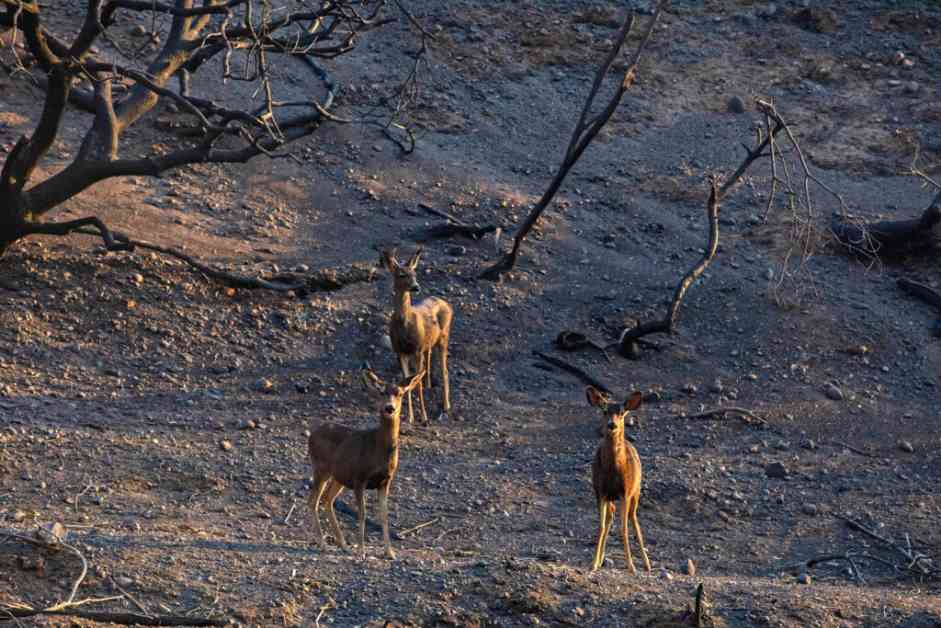California Wildfires Devastate Wildlife Habitats
Southern California has been ravaged by wildfires, with thousands of homes and structures destroyed, and over two dozen people losing their lives. As firefighters struggle to contain the fires fueled by the Santa Ana winds, the impact on wildlife adaptation is becoming a growing concern.
Wildlife Facing Unprecedented Challenges
The wildfires have not only taken a toll on human lives and properties but have also severely impacted wildlife in the region. The fires have deprived animals of critical resources such as shelter, water, and food sources, essential for their survival. Animals that managed to escape the flames are now struggling to find safe habitats amidst the devastation.
Wildlife experts emphasize the importance of allowing wild animals to find their way to safe habitats without human interference. Providing food or water to wildlife during emergencies can lead to unintended consequences, alter their behavior, and increase the risk of spreading diseases.
Struggles of Mountain Lions in Urban Settings
Mountain lions, one of the iconic species of Southern California, are facing numerous challenges due to urban development and habitat fragmentation. The wildfires, exacerbated by climate change, have further threatened the survival of these big cats. Roads, development, and fragmented habitats have isolated mountain lions, increasing the risk of fatal encounters and reducing genetic diversity.
Studies have shown that the Santa Monica Mountain lion population is at risk of extinction due to these ongoing challenges. The need for wildlife crossings and connectivity projects to allow animals to safely navigate urban areas and escape wildfires is more crucial than ever. These projects not only address biodiversity collapse but also enhance fire and climate resilience among wildlife populations.
Hope for the Future
Despite the challenges faced by wildlife in Southern California, there is still hope for the survival of species like mountain lions. Conservation efforts, such as wildlife crossings and habitat connectivity projects, offer a glimmer of hope for these animals. By providing safe passage for wildlife and addressing habitat fragmentation, we can help protect and preserve the diverse wildlife populations in the region.














